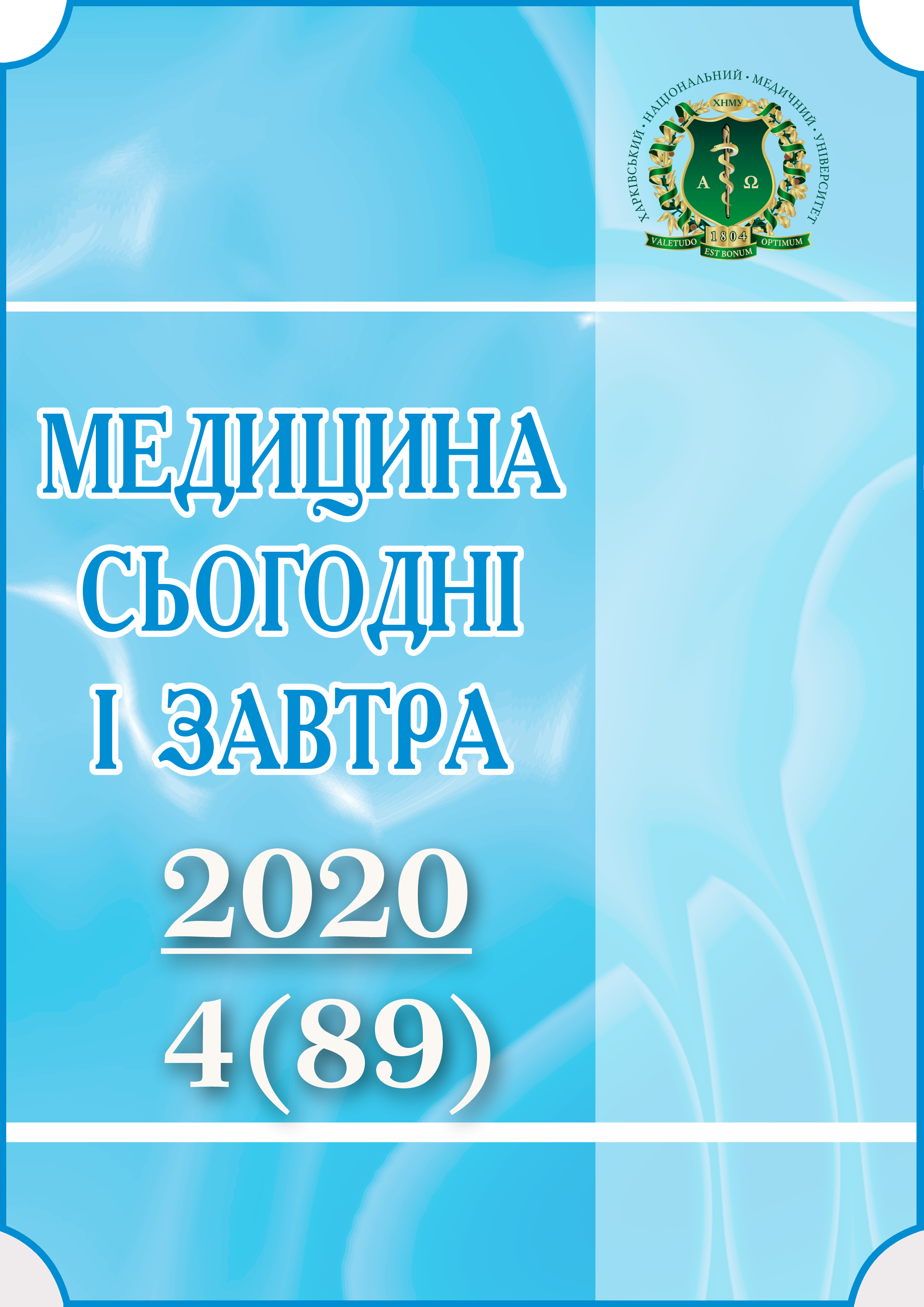Abstract
Prospective cohort research that included 104 patients with spontaneous supratentorial intracerebral hemorrhage (SSICH) on the ground of conservative treatment was carried out. Diagnosis was made by using clinical and neurovisualization investigation. The diagnostic and prognostic informativeness of serum interleukin-6 (IL-6) and interleukin-10 (IL-10) integrated assessment was investigated in patients with acute period of SSICH. Laboratory fasting blood samples were taken on the 1st and 5th day of admission with further detection of serum IL-6 and IL-10 concentrations. Early neurological deterioration and unfavorable acute period spontaneous supratentorial intracerebral hemorrhage outcome as grading 46 scores by modified Rankin scale on the 21st day of the disease were chosen as clinical combined endpoints. Lethal outcome and unfavorable functional outcome were also recorded. Three profile types of serum IL-6 and IL-10 concentrations were identified on the ground of cluster analysis in patients with SSICH. It was revealed that profile’s types with reciprocal elevation of cytokines are associated with heavier brain structures affection and increased risk of early neurological deterioration (relative risk (95% Cl) = 3,40 (1,35-8,53), p=0,0091), lethal outcome (relative risk (95% Cl) = 7,50 (1,80-31,17), p=0,0056) and unfavorable acute period functional outcome (relative risk (95% Cl) = 2,28 (1,46-3,57), p=0,0003). Four types of IL-6 and IL-10 serum profile on the 5th day of admission were identified. In this case profiles with elevation IL-6 levels are associated with increased risk of unfavorable acute period SSICH outcome into 2,1 times (relative risk (95% Cl) = 2,13 (1,44-3,15), p=0,0002). Profile’s types of serum IL-6 and IL-10 levels in patients with SSICH are informative integrated parameter for short-term prognosis on the ground of conservative treatment.
Keywords: cerebral hemorrhage, interleukin-6, interleukin-10, prognosis.
References
Unifikovanyi klinichnyi protokol ekstrenoi, pervynnoi, vtorynnoi (spetsializovanoi), tretynnoi (vysokospetsializovanoi) medychnoi dopomohy ta medychnoi reabilitatsii «Hemorahichnyi insult (vnutrishnomozkova hematoma, anevryzmalnyi subarakhnoidalnyi krovovylyv)» (2014). Retrieved from https://www.dec.gov.ua/wp-content/uploads/2019/ll/2014_275_ykpmd_gi.pdf [in Ukrainian],
Weimar, C., & Kleine-Borgmann, J. (2017). Epidemiology, prognosis and prevention of non-traumatic intracerebral hemorrhage. Current Pharmaceutical Design, 23(15), 2193-2196. DOI: 10.2174/1381612822666161027152234.
An, S.J., Kim, T. J., & Yoon, B.W. (2017). Epidemiology, risk factors, and clinical features of intracerebral hemorrhage: an update. Journal of Stroke, 19(1), 3-10. DOI: 10.5853/jos.2016.00864. PMID: 28178408.
Akpinar, E., Gurbuz, M.S., & Berkman, M.Z. (2019). Factors affecting prognosis in patients with spontaneous supratentorial intracerebral hemorrhage under medical and surgical treatment. The Journal of Craniofacial Surgery, 30(7), e667-e671. DOI: 10.1097/SCS.0000000000005733. PMID: 31306386.
Pinho, J., Costa, A.S., Araujo, J.M., Amorim, J.M., & Ferreira, C. (2019). Intracerebral hemorrhage outcome: A comprehensive update. Journal of the Neurological Sciences, 398, 54-66. DOI: 10.1016/j.jns.2019.01.013.
Belur, P.K., Chang, J.J., He, S., Emanuel, B.A., & Mack, W.J. (2013). Emerging experimental therapies for intracerebral hemorrhage: targeting mechanisms of secondary brain injury. Neurosurgical Focus, 34(5), E9. DOI: 10.3171/2013.2.FOCUS1317.
Tschoe, C., Bushnell, C.D., Duncan, P.W., Alexander-Miller, M.A., & Wolfe, S.Q. (2020). Neuro-inflammation after intracerebral hemorrhage and potential therapeutic targets. Journal of Stroke, 22(1), 29-46. DOI: 10.5853/jos.2019.02236. PMID: 32027790.
Zhang, Z., Zhang, Z., Lu, H., Yang, Q., Wu, H., & Wang, J. (2017). Microglial polarization and inflammatory mediators after intracerebral hemorrhage. Molecular Neurobiology, 54(3), 1874-1886. DOI: 10.1007/sl2035-016-9785-6. PMID: 26894396.
Ouyang, W., & O’Garra, A. (2019). IL-10 family cytokines IL-10 and IL-22: from basic science to clinical translation. Immunity, 50(4), 871-891. DOI: 10.1016/j.immuni.2019.03.020. PMID: 30995504.
Tanaka, T., Narazaki, M., & Kishimoto, T. (2014). IL-6 in inflammation, immunity, and disease. Cold Spring Harbor perspectives in biology, 6(10), a016295. DOI: 10.1101/cshperspect.a016295. PMID: 25190079.
Garcia, J.M., Stillings, S.A., Leclerc, J.L., Phillips, H., Edwards, N.J., Robicsek, S.A. et al. (2017). Role of interleukin-10 in acute brain injuries. Frontiers in Neurology, 8, 244. DOI: 10.3389/fneur.2017.00244. PMID: 28659854.
Kuznietsov, A.A. (2018). Comparative analysis of predictive significance of neuroimaging parameters in patients with spontaneous supratentorial intracerebral hemorrhage. Zaporozhye Medical Journal, 20(4), 543-547. DOI: 10.14739/2310-1210.

